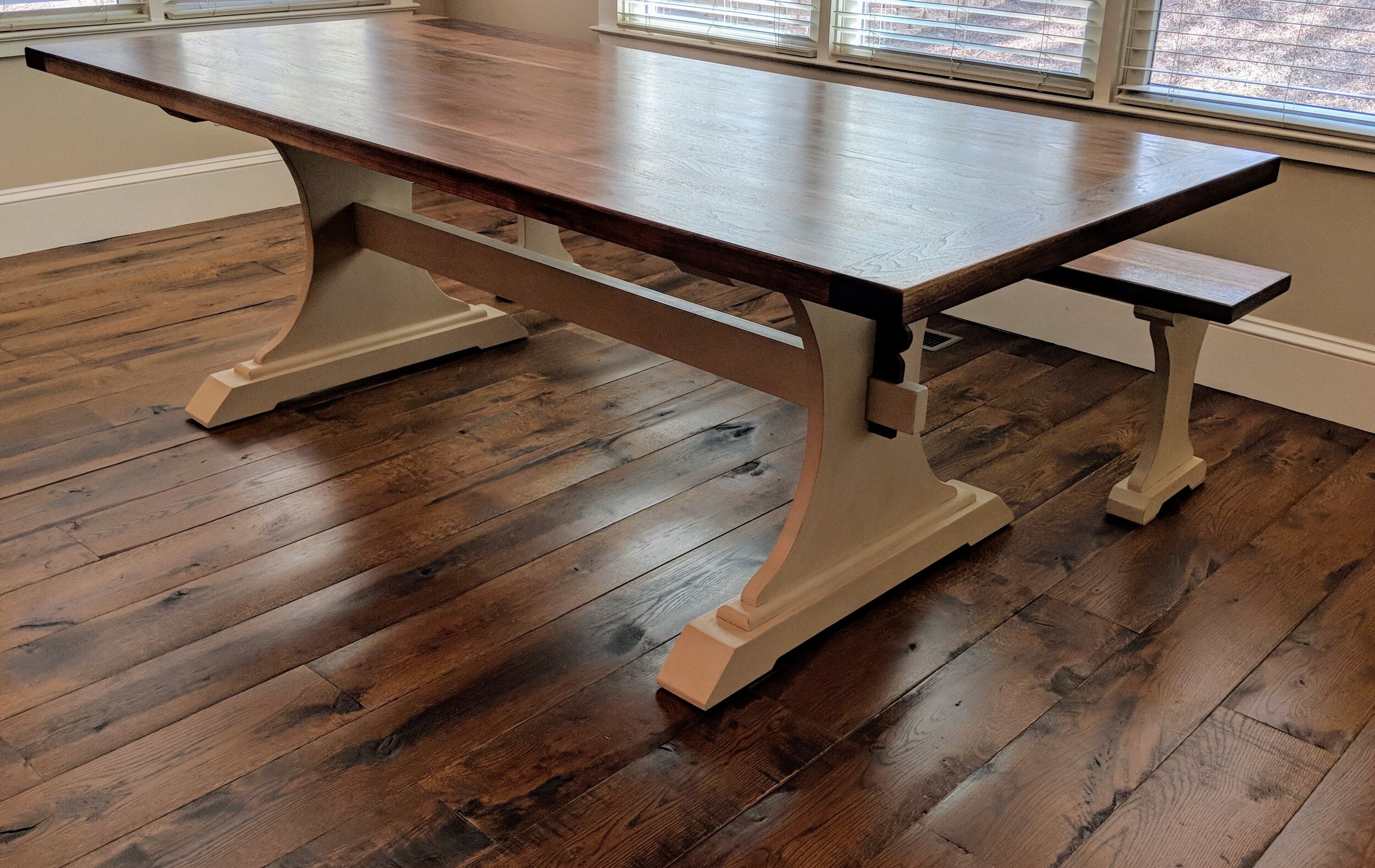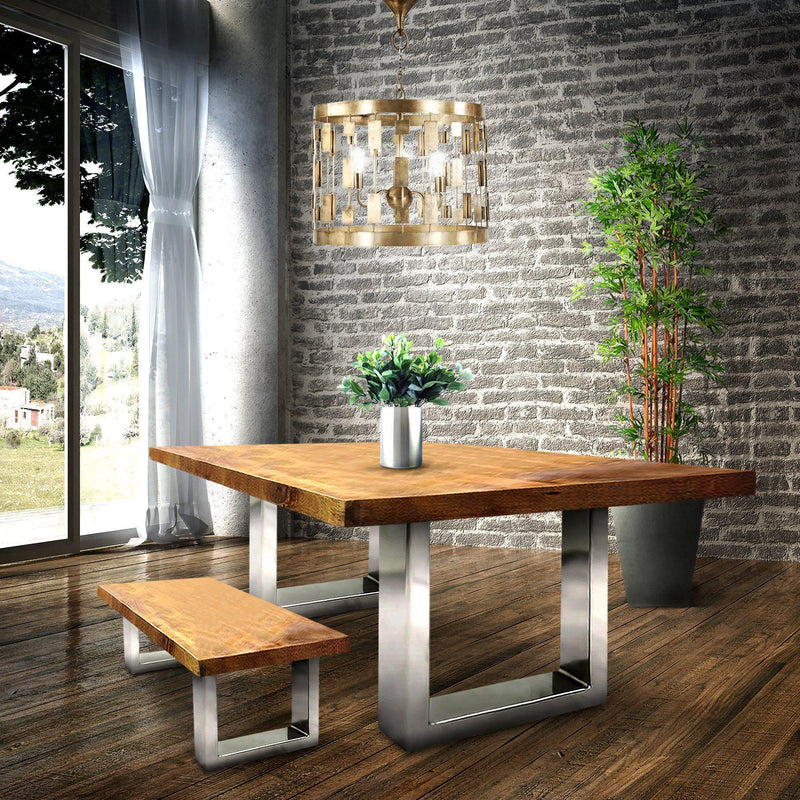Dining Room Table Legs: A Guide to Selecting the Right Style for Your Home
Dining Room Table Legs: A Guide to Selecting the Right Style for Your Home
Blog Article
From Typical to Modern: Discover the Perfect Dining-room Table Legs for Your Design
While timeless designs such as cabriole and transformed legs evoke a sense of timeless class, modern designs like barrette and geometric alternatives provide a possibility for striking aesthetic interest. As you consider these elements, the concern remains: just how can you flawlessly incorporate these diverse leg styles to develop a harmonious eating experience?
Recognizing Table Leg Styles
The range of dining room table leg styles can dramatically affect both the appearances and capability of the area. Each leg design adds special aesthetic components and functional functions, providing to varied design preferences and use demands. Recognizing these designs is essential for picking the best table that aligns with your general indoor layout vision.
For instance, tapered legs supply a tidy, classic appearance that can improve an area's sophistication, while stand bases offer stability and maximize legroom, making them optimal for smaller areas. Hairpin legs, a characteristic of mid-century modern-day design, introduce an industrial panache, enabling for an airy, open feeling. In a similar way, trestle legs evoke rustic appeal, giving robust assistance and a sense of timelessness.
Wooden legs can bring warmth and texture, whereas steel choices usually share a streamlined, modern vibe. Ultimately, understanding table leg designs is vital for producing a cohesive dining area that mirrors personal style while making sure usefulness and comfort.
Conventional Table Leg Options
When choosing dining room table legs, traditional alternatives usually symbolize timeless beauty and workmanship. These styles mirror a rich heritage and a commitment to top quality, making them suitable for those that value timeless aesthetic appeals.
One of one of the most legendary conventional leg styles is the cabriole leg, defined by its stylish rounded shape. This style typically includes decorative carvings and is most typically found in Queen Anne and Chippendale furniture. One more preferred alternative is the transformed leg, which boasts a series of smooth, rounded forms that supply a traditional look while maintaining security.
Furthermore, the straight leg, while easy, provides a tough and basic structure that can blend effortlessly with a variety of tabletop designs. For those attracted to ornate outlining, claw-and-ball feet legs evoke a feeling of splendour and can offer as a magnificent centerpiece in any kind of eating room.
Finally, pedestal bases, although not strictly legs, offer a different typical option that permits enough legroom and can be perfectly sculpted. Each of these conventional leg styles contributes to the total ambiance of a dining-room, marrying feature with visual allure.

Modern Table Leg Layouts
Modern table leg designs offer a diverse series of styles that highlight innovative materials and clean lines. These designs usually prioritize functionality while working as striking focal factors within an eating area. Minimalist aesthetics are prevalent, with legs crafted from products such as steel, glass, and crafted wood, which add to a airy and contemporary feeling.
One popular layout is the barrette leg, characterized by its slender, conical framework that provides stability without overwhelming the table top (dining room table legs). This style is frequently located in mid-century modern-day furniture and can effortlessly complement numerous eating table forms. Another trend is making use of geometric forms, where legs might take find more on asymmetrical or angular types, adding visual interest and a touch of artistry

Blending Styles for Special Rooms
Typically, house owners seek to develop unique dining spaces that mirror their personal style by mixing numerous layout aspects. This strategy permits the consolidation of diverse visual appeals, causing a harmonious yet unique environment. For instance, matching a rustic wooden table with streamlined, modern-day steel legs can develop a distinctive contrast that boosts the space's total appeal.
Additionally, integrating vintage table legs with modern tabletops can stimulate a feeling of history while preserving a modern-day perceptiveness. Such combinations not only display specific taste page but likewise urge imagination, allowing homeowners to curate a space that really feels both personal and welcoming.
Color plays a vital function in this mixing procedure; picking table legs that complement or comparison with the existing color pattern can boost visual rate of interest. As an example, whitewashed legs can soften the boldness of a dark table surface, developing a balanced aesthetic.
Tips for Choosing the Right Legs
Selecting the right table legs is crucial for attaining both performance and visual charm in your eating space. Begin by considering the general design of your space. Traditional setups gain from legs that include elaborate carvings or transformed layouts, while contemporary rooms might require smooth, minimal designs.
Following, evaluate the elevation and security of the legs. dining room table legs. Conventional table range between 28 to 30 inches in elevation, so make sure the legs enhance this measurement for comfort. Furthermore, robust products, such as wood or metal, can improve security and durability
Examine the leg form as well-- alternatives include directly, tapered, or stand layouts. Straight legs offer a traditional look, while conical legs can add a touch of style. Pedestal bases provide adequate legroom and are excellent for smaller sized rooms.
Verdict
In check out here recap, picking the suitable dining-room table legs requires mindful consideration of both modern-day and typical designs. Standard choices such as cabriole and turned legs offer timeless elegance, while modern designs like hairpin and geometric forms give a modern touch. By balancing leg style, height, and product with the total decor, a natural and inviting environment can be accomplished. Eventually, the chosen table legs should mirror the preferred aesthetic, improving the eating experience within the room.
The range of dining space table leg designs can dramatically influence both the aesthetic appeals and functionality of the area. Ultimately, comprehending table leg styles is crucial for producing a natural dining location that shows individual design while making sure functionality and convenience.One of the most iconic conventional leg designs is the cabriole leg, characterized by its stylish curved form. Straight legs use a timeless look, while tapered legs can include a touch of elegance.In summary, picking the suitable dining space table legs requires cautious factor to consider of both conventional and modern-day designs.
Report this page